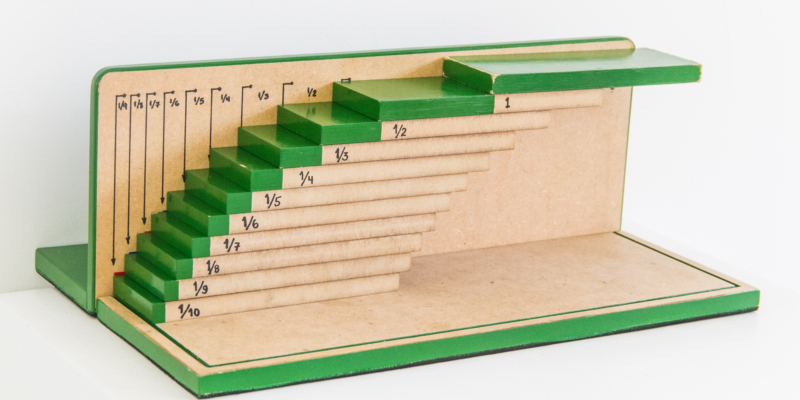HARMONIC SERIES
Is it possible to stack equal plates, without using glue, so that the length of the projection of the set on the table is arbitrarily large?
The fact that the harmonic series 1 + 1/2 + 1/3 + 1/4 + … diverging to infinity guarantees the affirmative answer to this question. Just stack the plates like this: for each plate, the set of plates above it has the center of mass at its end, that is, it is in the limit position to fall. By the way, if you want to know more about center of mass, take a look at our exhibit that talks about it!

Although the harmonic series tends to infinity, this happens very slowly. If, since the Big Bang, approximately 14 billion years ago, a new term of the series had been added every second, this number would still not have exceeded 50. This is what we mean by very slowly!!!!
This idea becomes clearer by observing some partials of the harmonic series:
1 + 1/2 + 1/3 + ... + 1/10 = 2,92…
1 + 1/2 + 1/3 + ... + 1/100 = 5,18…
1 + 1/2 + 1/3 + ... + 1/10000 = 9,78…
1 + 1/2 + 1/3 + ... + 1/1000000 = 14,39…
